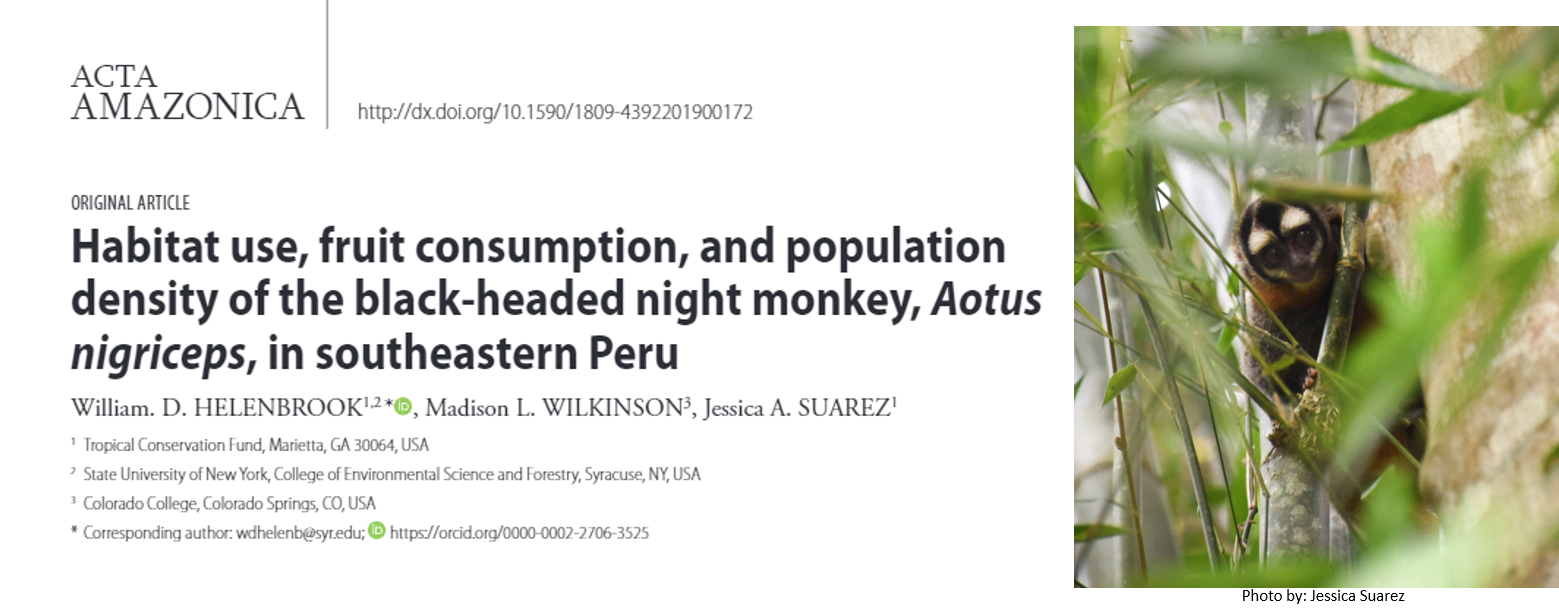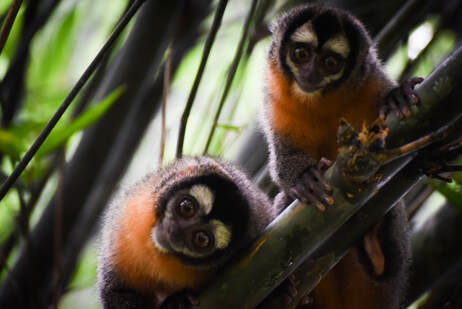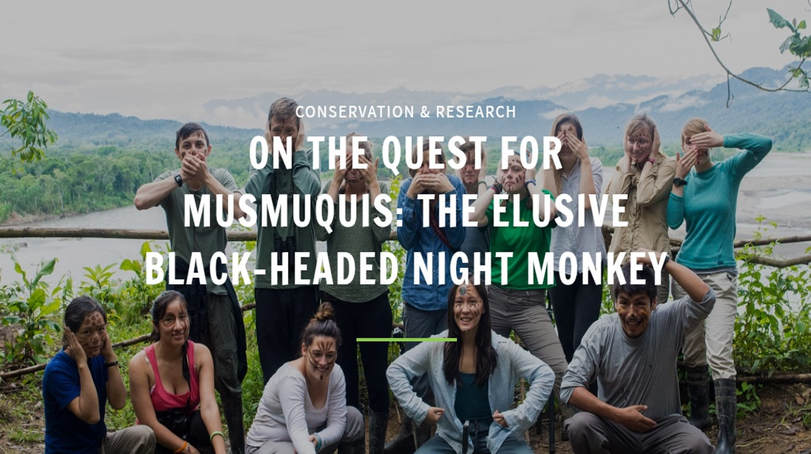Our projects take us to some of the most remote places on the planet in order to learn more about rare, endangered, and ecologically important species, document human impacts on the planet, and work with local partners to protect habitat and wildlife.
Night Monkey Research, Peru
|
Discover some of our ongoing research with the black-headed night monkey (Aotus nigriceps) in the Manu Biosphere of southeastern Amazon, Peru.
|
Publications

Check out our recent night monkey research:
Species distribution modeling and conservation assessment of the black-headed night monkey (Aotus nigriceps) – A species of Least Concern that faces widespread anthropogenic threats
Molecular characterization of Blastocystis in captive and free-ranging New World Primates Platyrrhini, Primates
Intestinal parasitism in free-ranging black-headed night monkeys, Aotus nigriceps, of Southeastern Peru
Habitat use, fruit consumption, and population density of the black-headed night monkey, Aotus nigriceps, in Southeastern Peru
Spatial variation in black-headed night monkey (Aotus nigriceps) vocalizations
Bioacoustics of the black-headed Night Monkey, Aotus nigriceps
Species distribution modeling and conservation assessment of the black-headed night monkey (Aotus nigriceps) – A species of Least Concern that faces widespread anthropogenic threats
Molecular characterization of Blastocystis in captive and free-ranging New World Primates Platyrrhini, Primates
Intestinal parasitism in free-ranging black-headed night monkeys, Aotus nigriceps, of Southeastern Peru
Habitat use, fruit consumption, and population density of the black-headed night monkey, Aotus nigriceps, in Southeastern Peru
Spatial variation in black-headed night monkey (Aotus nigriceps) vocalizations
Bioacoustics of the black-headed Night Monkey, Aotus nigriceps
Night Monkey (or Owl Monkeys)
|
TCF conducts research into the bioacoustics, behavior, habitat, and parasitology of night monkeys (Aotus) across the Amazon Basin.
(Photos by Jessica Suarez)
(Photos by Jessica Suarez)
Want more details about our research, visit Primates, Parasites, and Conservation Biology.
Details about upcoming expeditions, visit Expeditions.
Details about upcoming expeditions, visit Expeditions.


